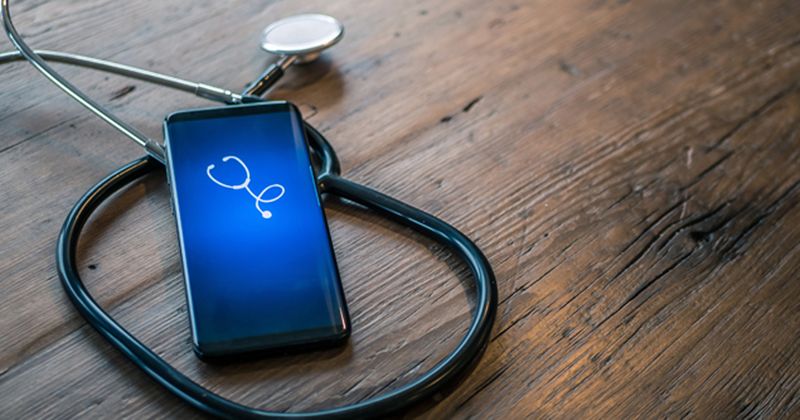Web-based follow-up care may be safe, cost-effective for THA, TKA
Click Here to Manage Email Alerts
KOLOA, Hawaii — Web-based follow-up care for routine total hip and knee arthroplasty may be cost-effective and safe, but requires some work for implementation, according to a presenter at Orthopedics Today Hawaii.
“I think there are a number of stumbling blocks to make [web-based follow-up] standard of care,” Richard W. McCalden, MD, said in his presentation here. “There is no question that COVID-19, at least for our institution, has pushed us to the idea that we don’t need to see patients face-to-face to provide care for them.”

Image: Adobe Stock
In 2014, McCalden and colleagues published three papers that reviewed whether a web-based platform could effectively be used to follow up with patients who underwent THA and TKA while being cost-effective to patients and the health care system.

“The rationale was the idea that we continue to see patients fairly frequently because we want to gather their [patient-reported outcome measures] PROMs, but the majority of the follow-ups are routine,” McCalden said. “Nothing changes with respect to their clinical outcomes, and we know that, at least in a care system like ours, money is limited. So, is there a way that we can maybe spend less money seeing patients and follow-up?”
Web-based vs. usual care
McCalden noted patients were randomly assigned to receive either web-based care or usual care and then stratified by type of surgery and the distance traveled to the clinic. Researchers collected WOMAC, Harris Hip Scores, SF-12, EuroQol-5D and cost-analysis forms, as well as X-rays and a brief history questionnaire that asked whether patients had any new pain or symptoms in their replaced joint and whether patients had any new pain or symptoms in any other hip or knee joint.
“If they answered ‘yes’ to that question, then they automatically were triggered to come back and see us,” McCalden said. “It was a way of making sure we’re not ignoring patients who are suffering.”
Among 210 patients who completed the study, McCalden noted patients in the web-based group had a shorter travel distance, lower travel cost, less time to complete follow-up and less assistance from a caregiver compared with patients in the usual care group.
He also noted that no patients had problems or issues that were missed by the web-based system at 1 year.
“In other words, we picked up everybody we thought had a problem, either based on their X-rays or based on their answers, and we saw those patients in an appropriate manner,” McCalden said. “Therefore, [the web-based program] was clinically effective in that respect as an alternative to seeing patients in person.”
Economic savings
Although patients in the usual care group reported higher satisfaction with the care they received, McCalden noted there was no significant difference between the two groups with regard to satisfaction with the follow-up process.
“In terms of preference, it was split down the middle in terms of whether people preferred the web vs. they preferred the usual care, and about one-fifth of the patients had no preference. They didn’t care at all which they did,” he said.
In the economic evaluation, researchers found using a web-based platform saved approximately $27 Canadian dollars per patient from a health care perspective and $65 Canadian dollars per patient from a societal perspective.
“So, what is the bottom line of all of this? [Web-based follow-up] costs less to do from both a societal and health care perspective mode. It’s safe, it’s effective, we didn’t miss things that we would have by not seeing patients and, for the most part, people were satisfied with this,” McCalden said.
Sustaining virtual care
Despite the positive results, McCalden said implementation of a web-based follow-up program did not occur until the COVID-19 pandemic because of lack of buy-in from health care providers and resistance from surgeons due to the amount of time, effort and cost needed for setting up the program.
“There is no question, though, that COVID-19 has significantly changed postoperative care,” McCalden said. “Initially, we were unable see routine patients. We could only see our immediate postoperative patients. Therefore, virtual care became the norm, where we were calling patients that we normally see at 1 year or 2 [years], making sure they were OK. I think we embraced it because, first of all, we were getting paid to do it, so it was effective. But will it be sustained? I think it depends on the remuneration. If they take this away from us, we have all said we are just going to have to continue doing [follow-up] the usual way.”
References:
Marsh J, et al. Clin Orthop Relat Res. 2014;doi:10.1007/s11999-014-3514-0.
Marsh J, et al. J Arthroplasty. 2014;doi:10.1016/j.arth.2014.04.003.
Marsh J, et al. J Bone Joint Surg Am. 2014;doi:10.2106/JBJS.M.01558.


